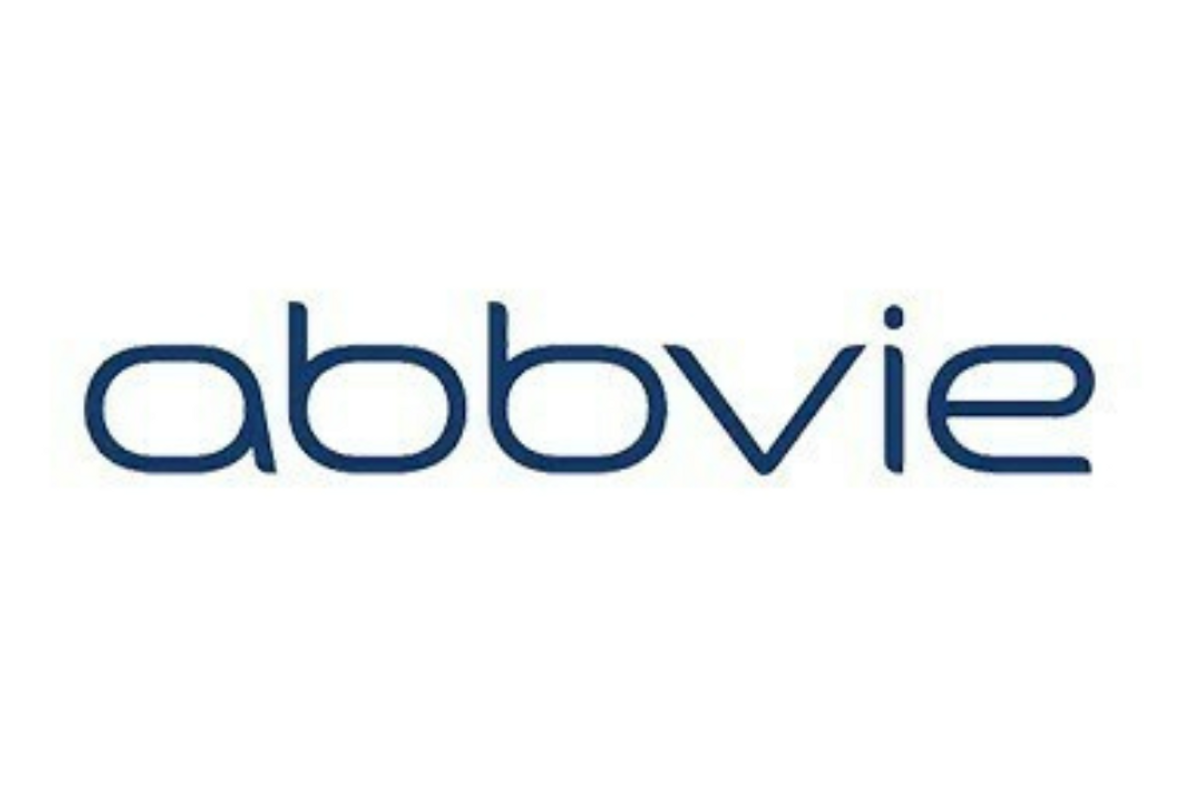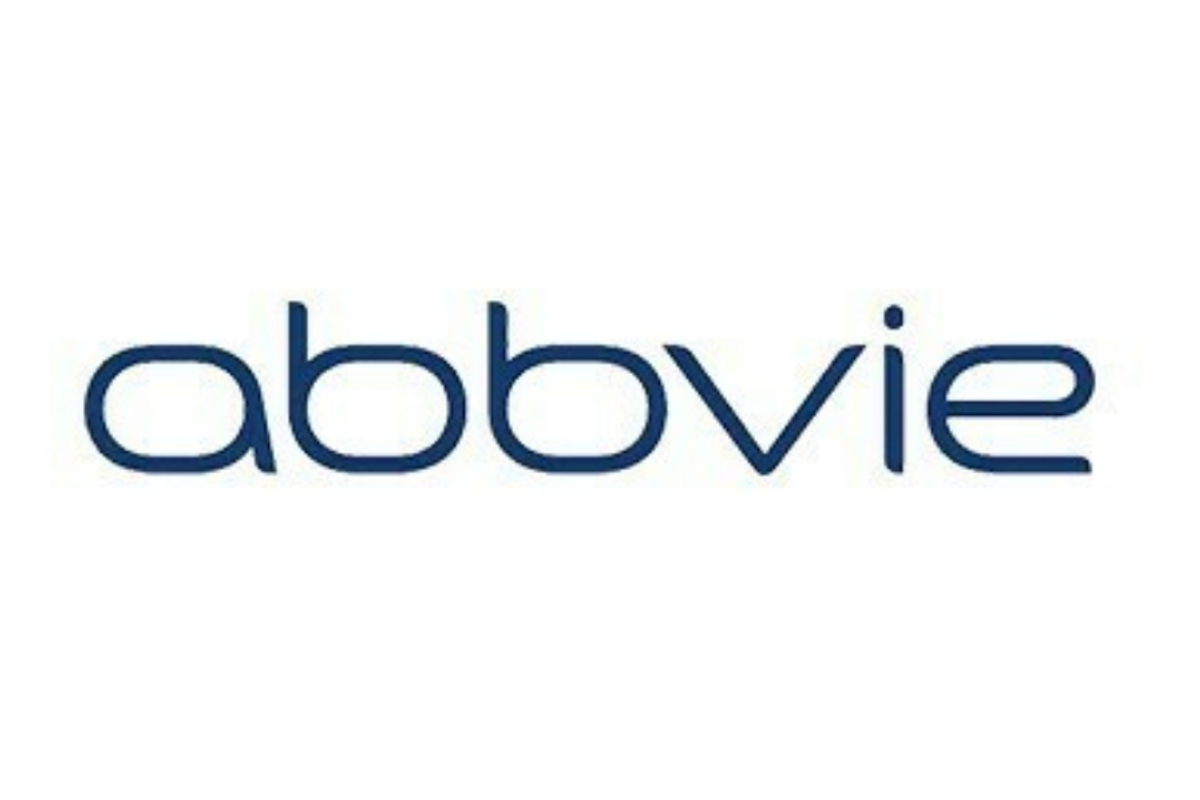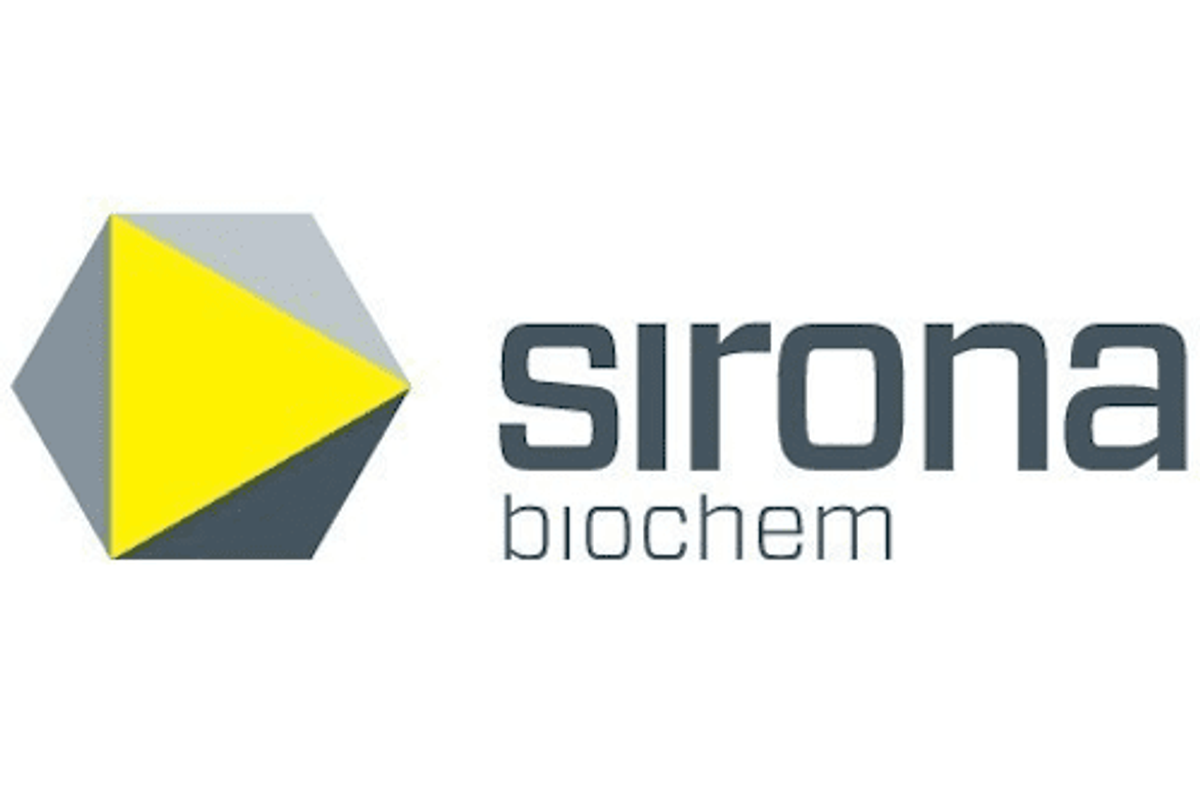- Results from the SELECT-AXIS 2 non-radiographic axial spondyloarthritis (nr-axSpA) study demonstrated significantly greater improvements in signs and symptoms, pain, function, disease activity, health-related quality of life, and MRI-detected SI joint inflammation with upadacitinib ( RINVOQ ® ) compared to placebo at week 14 1
- Results from the SELECT-AXIS 2 ankylosing spondylitis (AS) bDMARD-IR study demonstrated significantly greater improvements in signs and symptoms, pain, function, disease activity, health-related quality of life, and MRI-detected spine inflammation with upadacitinib compared to placebo at week 14 2
- Safety data were consistent with the known safety profile of upadacitinib, with no new risks observed 1 , 2 ,3,4,5
ABBVie (NYSE: ABBV) today announced the presentation of full results from two studies from the Phase 3 SELECT-AXIS 2 program evaluating upadacitinib (RINVOQ ® ), an oral therapy, in adult patients with active non-radiographic axial spondyloarthritis (nr-axSpA) and patients with treatment-refractory active ankylosing spondylitis (AS) with an inadequate response (IR) to biologic disease-modifying antirheumatic drugs (bDMARDs). Both studies met the primary endpoint of Assessment of SpondyloArthritis international Society 40 percent response criteria (ASAS40) at week 14 versus placebo. 1 2
In the SELECT-AXIS 2 nr-axSpA study, significantly more nr-axSpA patients achieved the primary endpoint of ASAS40 at week 14 with upadacitinib versus placebo (45 percent versus 23 percent; p 1 Statistical significance was also achieved in the first 12 of 14 multiplicity-controlled secondary endpoints compared to placebo at week 14 including change from baseline in patient's assessment of total back pain, Bath Ankylosing Spondylitis Functional Index (BASFI), Ankylosing Spondylitis Disease Activity Score (ASDAS) Low Disease Activity, Ankylosing Spondylitis Quality of Life (ASQoL), and MRI Spondyloarthritis Research Consortium of Canada (SPARCC) score for SI joints. 1
"The new data observed from SELECT-AXIS 2 reinforce the potential of upadacitinib for patients across the spectrum of axial spondyloarthritis disease," said Neil Gallagher , M.D., Ph.D., vice president, development, chief medical officer, AbbVie. "At AbbVie, the needs of patients drive us to continue to innovate new ways to change the treatment landscape. We are encouraged by these positive data, which we hope will lead to the availability of a new treatment option for patients with nr-axSpA."
These findings, for which AbbVie disclosed topline results in 2021, were submitted as part of the regulatory applications to the U.S. Food and Drug Administration (FDA) and the European Medicines Agency (EMA) to treat adults with active nr-axSpA with objective signs of inflammation who have responded inadequately to nonsteroidal anti-inflammatory drugs (NSAIDs).
"Non-radiographic axial spondyloarthritis is a progressive and disabling inflammatory disease, with limited treatment options. It often affects young adults, causing spinal inflammation that leads to back pain and stiffness and can significantly decrease quality of life," said Filip Van den Bosch , M.D., SELECT-AXIS 2 investigator and professor in the Department of Rheumatology at the University Hospital of Ghent University.* "These data suggest the potential of upadacitinib to help counter inflammation, relieve pain and improve function, helping patients living with nr-axSpA take control of their disease."
In the SELECT-AXIS 2 AS bDMARD-IR study, significantly more patients achieved the primary endpoint of ASAS40 at week 14 with upadacitinib versus placebo (45 percent versus 18 percent; p 2 Statistical significance was also achieved in all multiplicity-controlled secondary endpoints compared to placebo at week 14, including change from baseline in patient's assessment of total back pain, BASFI, ASDAS low disease activity, ASQoL, and MRI SPARCC score for spine. 2
No new safety risks were identified with upadacitinib when compared with its known safety profile. 1 , 2 ,3,4,5 Through week 14 in the nr-axSpA study, the proportion of patients who experienced an adverse event (AE) was similar between both treatment groups (upadacitinib at 48 percent and placebo at 46 percent). 1 Serious AEs were reported in four patients on upadacitinib and in two patients on placebo. 1 Through week 14 in the AS bDMARD-IR study, the proportion of patients who experienced an adverse event was also similar (upadacitinib at 41 percent and placebo at 37 percent). 2 In both the nr-axSpA study and the AS bDMARD-IR study, there were no reports of malignancy, major adverse cardiovascular events, venous thromboembolic events or death in patients receiving upadacitinib. 1 , 2
The full results for both studies will be presented at the EULAR 2022 Congress. The SELECT-AXIS 2 nr-axSpA study results will be presented in an oral presentation on 1 June, 4:35 – 4:45pm (CEST) (OP0016) and the SELECT-AXIS 2 AS bDMARD-IR study results will be presented in a poster tour on 4 June, 11:37 – 11:45am (CEST) (POS0306).
Use of upadacitinib in nr-axSpA is not approved in the U.S. or EU, and its efficacy and safety are currently under review by the respective regulatory authorities.
About the SELECT-AXIS 2 program
SELECT-AXIS 2 (NCT04169373) was conducted under a master protocol and includes two separate studies (SELECT-AXIS 2 AS bDMARD-IR study, or Study 1, and SELECT-AXIS 2 nr-axSpA study, or Study 2). AbbVie previously announced topline data showing that upadacitinib 15 mg met the primary endpoint vs placebo at week 14 in Study 1 and Study 2 .
More information on the SELECT-AXIS 2 program is available at www.clinicaltrials.gov (NCT04169373).
Study 1: SELECT-AXIS 2 bDMARD-IR AS study 1
A randomized, double-blind, placebo-controlled, Phase 3 trial, which evaluated the efficacy and safety of upadacitinib compared with placebo, in 420 patients with a clinical diagnosis of AS who fulfilled the modified New York criteria, had BASDAI score ≥4 and total back pain score ≥4 (based on a numerical scale of 0-10), and had an inadequate response to bDMARD therapy.
Study 2: SELECT-AXIS 2 nr-axSpA study 2
A randomized, double-blind, placebo-controlled, Phase 3 trial which evaluated the efficacy and safety of upadacitinib compared with placebo, in 314 patients with a clinical diagnosis of nr-axSpA. Patients enrolled in the study had active signs of inflammation consistent with axSpA on MRI of the sacroiliac (SI) joints, and/or high sensitivity C-reactive protein (hs-CRP) >upper limit of normal (2.87 mg/L) at screening, and who had BASDAI score ≥4 and a total back pain score ≥4 (based on a numerical scale of 0-10).
*Dr. Van den Bosch is a consultant and advisor for AbbVie.
About Axial Spondyloarthritis (axSpA)
Axial spondyloarthritis is a chronic inflammatory disease that affects the spine, causing back pain, limited mobility, and structural damage. 6 It consists of two subsets that have been clinically defined as radiographic axial SpA (ankylosing spondylitis) and non-radiographic axial spondyloarthritis (nr-axSpA). 6 In ankylosing spondylitis, patients have definitive structural damage of the sacroiliac joints visible on x-rays. 6 Non-radiographic axial spondyloarthritis is clinically defined by the absence of definitive x-ray evidence of structural damage to the sacroiliac (SI) joint by plain x-ray. 6
About RINVOQ ® (upadacitinib) 5
Discovered and developed by AbbVie scientists, RINVOQ is a selective JAK inhibitor that is being studied in several immune-mediated inflammatory diseases. In human cellular assays, RINVOQ preferentially inhibits signaling by JAK1 or JAK1/3 with functional selectivity over cytokine receptors that signal via pairs of JAK2. 5
In the EU, RINVOQ is approved for the treatment of adults with moderate to severe active rheumatoid arthritis who have responded inadequately to, or who are intolerant to one or more disease-modifying anti-rheumatic drugs; for the treatment of active psoriatic arthritis (PsA) in adult patients who have responded inadequately to, or who are intolerant to one or more DMARDs; for the treatment of active ankylosing spondylitis (AS) in adult patients who have responded inadequately to conventional therapy; and for adults (15 mg and 30 mg) and adolescents (15 mg) with moderate to severe atopic dermatitis.
Phase 3 trials of RINVOQ in atopic dermatitis, axial spondyloarthritis, Crohn's disease, ulcerative colitis, giant cell arteritis and Takayasu arteritis are ongoing. 7,8,9,10,11,12 Use of RINVOQ in nr-axSpA is not approved and remains under review by regulatory authorities.
EU Indications and Important Safety Information about RINVOQ ® (upadacitinib) 5
Indications
Rheumatoid arthritis
RINVOQ is indicated for the treatment of moderate to severe active rheumatoid arthritis in adult patients who have responded inadequately to, or who are intolerant to one or more disease-modifying anti-rheumatic drugs (DMARDs). RINVOQ may be used as monotherapy or in combination with methotrexate.
Psoriatic arthritis
RINVOQ is indicated for the treatment of active psoriatic arthritis in adult patients who have responded inadequately to, or who are intolerant to one or more DMARDs. RINVOQ may be used as monotherapy or in combination with methotrexate.
Ankylosing spondylitis
RINVOQ is indicated for the treatment of active ankylosing spondylitis in adult patients who have responded inadequately to conventional therapy.
Atopic dermatitis
RINVOQ is indicated for the treatment of moderate to severe atopic dermatitis in adults and adolescents 12 years and older who are candidates for systemic therapy.
Important Safety Information
Contraindications
RINVOQ is contraindicated in patients hypersensitive to the active substance or to any of the excipients, in patients with active tuberculosis (TB) or active serious infections, in patients with severe hepatic impairment, and during pregnancy.
Special warnings and precautions for use
Immunosuppressive medicinal products
Use in combination with other potent immunosuppressants is not recommended.
Serious infections
Serious and sometimes fatal infections have been reported in patients receiving upadacitinib. The most frequent serious infections reported included pneumonia and cellulitis. Cases of bacterial meningitis have been reported. Among opportunistic infections, TB, multidermatomal herpes zoster, oral/esophageal candidiasis, and cryptococcosis have been reported with upadacitinib. As there is a higher incidence of infections in patients ≥65 years of age, caution should be used when treating this population.
Viral reactivation
Viral reactivation, including cases of herpes zoster, was reported in clinical studies. The risk of herpes zoster appears to be higher in Japanese patients treated with upadacitinib.
Vaccinations
The use of live, attenuated vaccines during or immediately prior to therapy is not recommended. It is recommended that patients be brought up to date with all immunizations, including prophylactic zoster vaccinations, prior to initiating upadacitinib, in agreement with current immunization guidelines.
Malignancy
The risk of malignancies, including lymphoma is increased in patients with rheumatoid arthritis (RA). Malignancies, including nonmelanoma skin cancer (NMSC), have been reported in patients treated with upadacitinib. Consider the risks and benefits of upadacitinib treatment prior to initiating therapy in patients with a known malignancy other than a successfully treated NMSC or when considering continuing upadacitinib therapy in patients who develop a malignancy.
Hematological abnormalities
Treatment should not be initiated, or should be temporarily interrupted, in patients with hematological abnormalities observed during routine patient management.
Diverticulitis
Upadacitinib should be used with caution in patients with diverticular disease and especially in patients chronically treated with concomitant medications associated with an increased risk of diverticulitis.
Cardiovascular risk
RA patients have an increased risk for cardiovascular disorders. Patients treated with upadacitinib should have risk factors (e.g., hypertension, hyperlipidemia) managed as part of usual standard of care.
Lipids
Upadacitinib treatment was associated with dose-dependent increases in lipid parameters, including total cholesterol, low-density lipoprotein cholesterol, and high-density lipoprotein cholesterol.
Hepatic transaminase elevations
Treatment with upadacitinib was associated with an increased incidence of liver enzyme elevation compared to placebo.
Venous thromboembolisms
Events of deep vein thrombosis (DVT) and pulmonary embolism (PE) have been reported in patients receiving JAK inhibitors, including upadacitinib. Upadacitinib should be used with caution in patients at high risk for DVT/PE.
Adverse reactions
The most commonly reported adverse reactions in rheumatoid arthritis, psoriatic arthritis, and ankylosing spondylitis clinical trials (≥2% of patients in at least one of the indications) with upadacitinib 15 mg were upper respiratory tract infections, blood creatine phosphokinase (CPK) increased, alanine transaminase (ALT) increased, bronchitis, nausea, cough, aspartate transaminase (AST) increased, and hypercholesterolemia.
The most commonly reported adverse reactions in atopic dermatitis trials (≥2% of patients) with upadacitinib 15 mg or 30 mg were upper respiratory tract infection, acne, herpes simplex, headache, CPK increased, cough, folliculitis, abdominal pain, nausea, neutropenia, pyrexia, and influenza. The most common serious adverse reactions were serious infections.
The safety profile of upadacitinib with long term treatment was generally similar to the safety profile during the placebo-controlled period across indications.
Overall, the safety profile observed in patients with psoriatic arthritis or active ankylosing spondylitis treated with upadacitinib 15 mg was consistent with the safety profile observed in patients with RA. In atopic dermatitis, dose-dependent increased risks of infection and herpes zoster were observed with upadacitinib. Based on limited data, there was a higher rate of overall adverse reactions with the upadacitinib 30 mg dose compared to the 15 mg dose in patients aged 65 years and older.
The safety profile for upadacitinib 15 mg in adolescents was similar to that in adults. The safety and efficacy of the 30 mg dose in adolescents are still being investigated. Dose-dependent changes in ALT increased and/or AST increased (≥ 3 x ULN), lipid parameters, CPK values (> 5 x ULN), and neutropenia (ANC 9 cells/L) associated with upadacitinib treatment were similar to what was observed in the rheumatologic disease clinical studies.
This is not a complete summary of all safety information.
See RINVOQ full summary of product characteristics (SmPC) at www.ema.europa.eu/en .
Globally, prescribing information varies; refer to the individual country product label for complete information.
About AbbVie in Rheumatology
For more than 20 years, AbbVie has been dedicated to improving care for people living with rheumatic diseases. Our longstanding commitment to discovering and delivering transformative therapies is underscored by our pursuit of cutting-edge science that improves our understanding of promising new pathways and targets in order to help more people living with rheumatic diseases reach their treatment goals. For more information on AbbVie in rheumatology, visit https://www.abbvie.com/our-science/therapeutic-focus-areas/immunology/immunology-focus-areas/rheumatology.html .
About AbbVie
AbbVie's mission is to discover and deliver innovative medicines that solve serious health issues today and address the medical challenges of tomorrow. We strive to have a remarkable impact on people's lives across several key therapeutic areas: immunology, oncology, neuroscience, eye care, virology, women's health and gastroenterology, in addition to products and services across its Allergan Aesthetics portfolio. For more information about AbbVie, please visit us at www.abbvie.com . Follow @abbvie on Twitter , Facebook , Instagram , YouTube and LinkedIn .
Forward-Looking Statements
Some statements in this news release are, or may be considered, forward-looking statements for purposes of the Private Securities Litigation Reform Act of 1995. The words "believe," "expect," "anticipate," "project" and similar expressions, among others, generally identify forward-looking statements. AbbVie cautions that these forward-looking statements are subject to risks and uncertainties that may cause actual results to differ materially from those indicated in the forward-looking statements. Such risks and uncertainties include, but are not limited to, failure to realize the expected benefits from AbbVie's acquisition of Allergan plc ("Allergan"), failure to promptly and effectively integrate Allergan's businesses, competition from other products, challenges to intellectual property, difficulties inherent in the research and development process, adverse litigation or government action, changes to laws and regulations applicable to our industry and the impact of public health outbreaks, epidemics or pandemics, such as COVID-19. Additional information about the economic, competitive, governmental, technological and other factors that may affect AbbVie's operations is set forth in Item 1A, "Risk Factors," of AbbVie's 2021 Annual Report on Form 10-K, which has been filed with the Securities and Exchange Commission, as updated by its subsequent Quarterly Reports on Form 10-Q. AbbVie undertakes no obligation to release publicly any revisions to forward-looking statements as a result of subsequent events or developments, except as required by law.
References
1 Deodhar, A, et al. Efficacy and Safety of Upadacitinib in Patients with Active Non-Radiographic Axial Spondyloarthritis: a Double-Blind, Randomized, Placebo-Controlled Phase 3 Trial. EULAR 2022 Congress; 2534.
2 Van der Heijde , D, et al. Efficacy and Safety of Upadacitinib in Patients With Active Ankylosing Spondylitis Refractory to Biologic Therapy: a Double-Blind, Randomized, Placebo-Controlled Phase 3 Trial. EULAR 2022 Congress; 2518.
3 Cohen et al. Ann Rheum Dis. 2020 Oct 28;80(3):304-11.
4 Burmester et al. Rheumatol Ther. 2022;9(2):521-39.
5 RINVOQ [Summary of Product Characteristics]. AbbVie Deutschland GmbH & Co. KG; May 2022 . Available at: https://www.ema.europa.eu/en/documents/product-information/rinvoq-epar-product-information_en.pdf . Accessed May 2022 .
6 Deodhar AA, Understanding Axial Spondyloarthritis: A Primer for Managed Care. Am J Managed Care. 2019;25:S319-S330.
7 Evaluation of Upadacitinib in Adolescent and Adult Patients With Moderate to Severe Atopic Dermatitis (Eczema) (Measure Up 1). ClinicalTrials.gov. 2021. Available at: https://clinicaltrials.gov/ct2/show/NCT03569293 . Accessed on April 1, 2022 .
8 A Study to Evaluate Efficacy and Safety of Upadacitinib in Adult Participants With Axial Spondyloarthritis (SELECT-AXIS 2). ClinicalTrials.gov. 2021. Available at: https://clinicaltrials.gov/ct2/show/NCT04169373 . Accessed on April 1, 2022 .
9 A Study of the Efficacy and Safety of Upadacitinib (ABT-494) in Participants With Moderately to Severely Active Crohn's Disease Who Have Inadequately Responded to or Are Intolerant to Biologic Therapy. ClinicalTrials.gov. 2021. Available at: https://clinicaltrials.gov/ct2/show/NCT03345836 . Accessed on April 1, 2022 .
10 A Study to Evaluate the Safety and Efficacy of Upadacitinib (ABT-494) for Induction and Maintenance Therapy in Participants With Moderately to Severely Active Ulcerative Colitis (UC). ClinicalTrials.gov. 2021. Available at: https://clinicaltrials.gov/ct2/show/NCT02819635 . Accessed on April 1, 2022 .
11 A Study to Evaluate the Safety and Efficacy of Upadacitinib in Participants With Giant Cell Arteritis (SELECT-GCA). ClinicalTrials.gov. 2021. Available at: https://clinicaltrials.gov/ct2/show/NCT03725202 . Accessed on April 1, 2022 .
12 A Study to Evaluate the Efficacy and Safety of Upadacitinib in Subjects With Takayasu Arteritis (TAK) (SELECT-TAK). ClinicalTrials.gov. 2021. Available at: https://clinicaltrials.gov/ct2/show/NCT04161898 . Accessed on April 1, 2022 .
![]() View original content: https://www.prnewswire.com/news-releases/abbvie-presents-positive-results-from-phase-3-select-axis-2-trials-of-upadacitinib-rinvoq-in-patients-with-axial-spondyloarthritis-at-eular-2022-301558026.html
View original content: https://www.prnewswire.com/news-releases/abbvie-presents-positive-results-from-phase-3-select-axis-2-trials-of-upadacitinib-rinvoq-in-patients-with-axial-spondyloarthritis-at-eular-2022-301558026.html
SOURCE AbbVie














